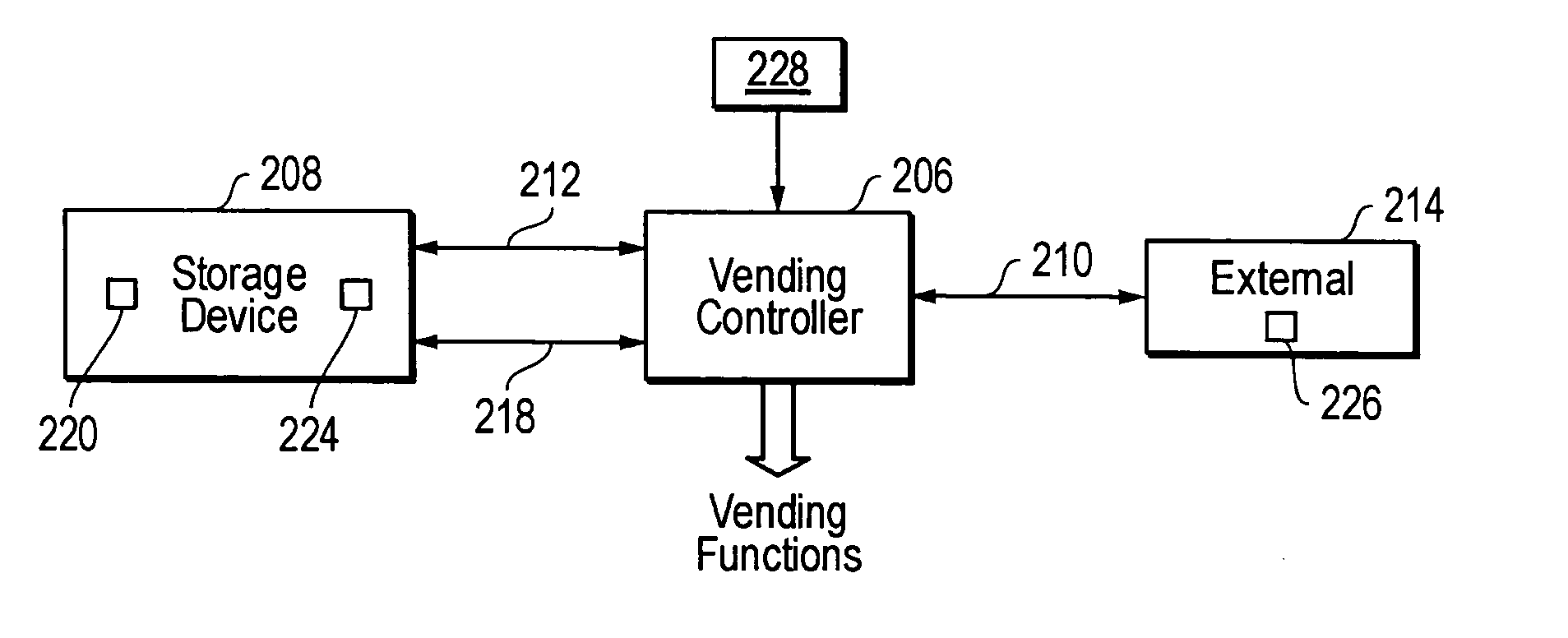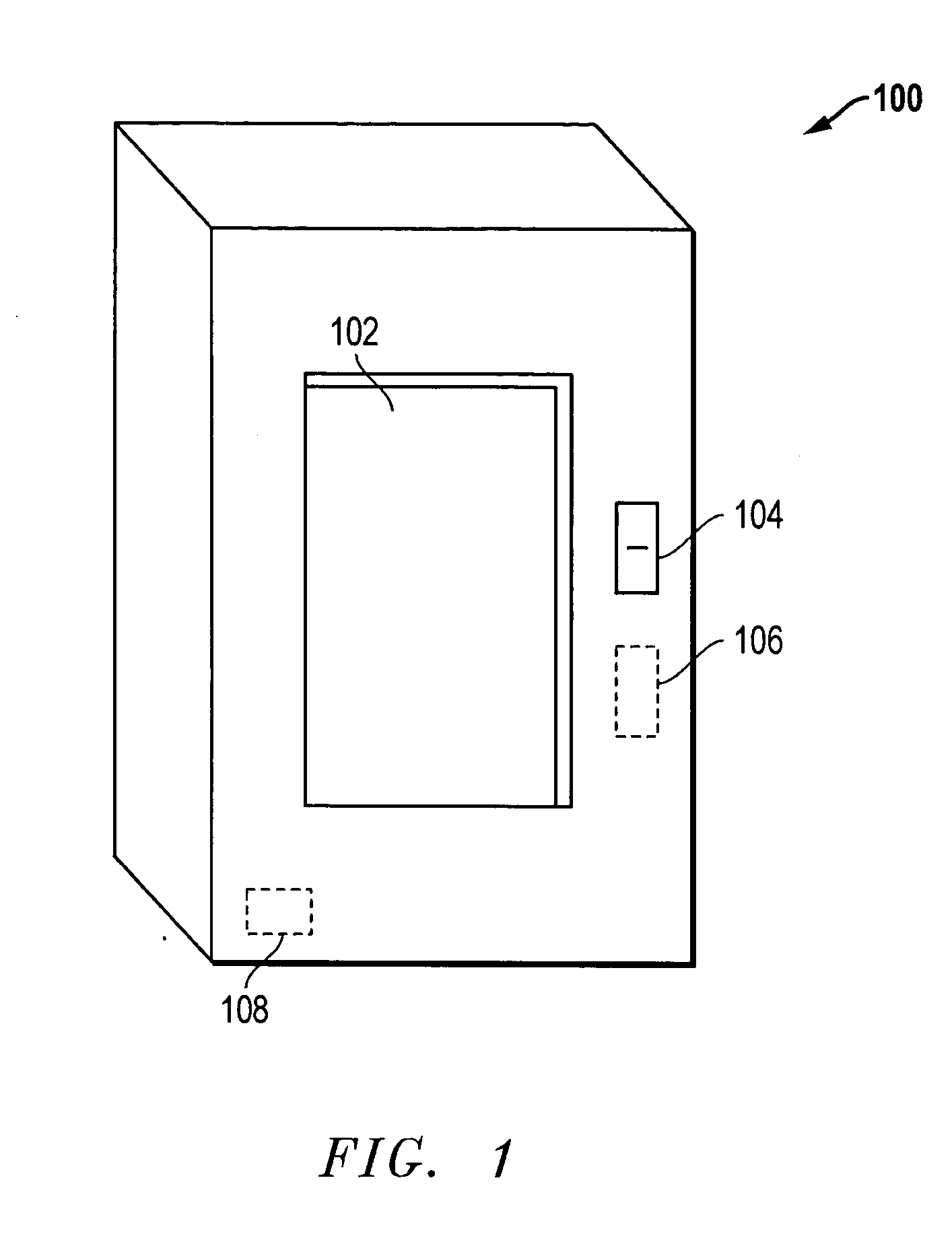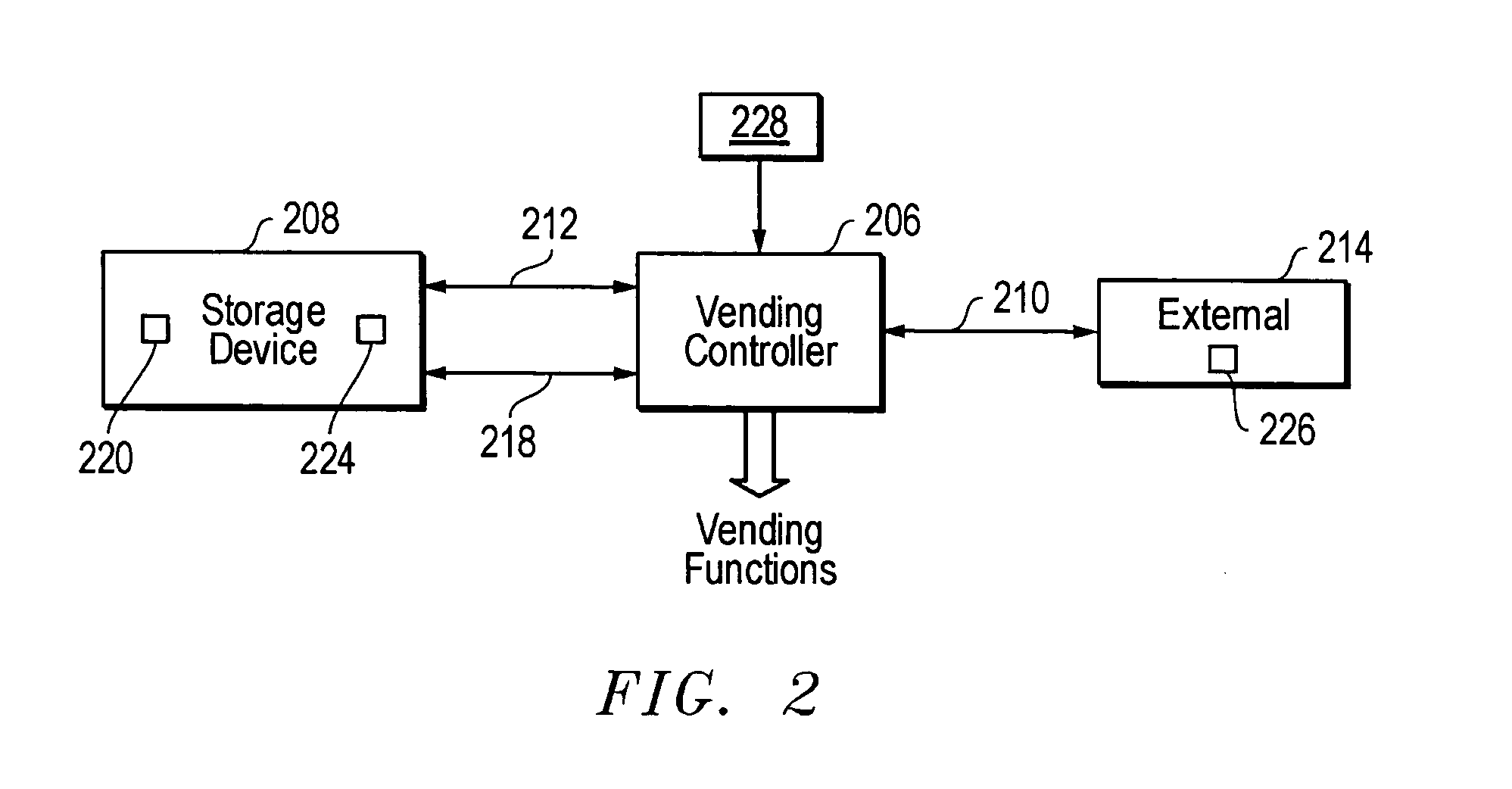[0008] In another embodiment, the present invention provides a vending machine with a magnetic
card reader that is connected with the nonvolatile storage device. The magnetic
card reader is compatible with magnetic credit or debit cards. A typical magnetic card is constructed of plastic and has a magnetic stripe containing information that is read by the magnetic
card reader. The nonvolatile storage device is preferably an inexpensive disk drive (e.g., a magnetic hard disk drive (HDD)), but also may be a
tape drive,
flash memory, static RAM or the like. A disk drive typically has a disk, a
recording head, a motor, etc. A disk drive also has a disk drive controller that facilitates operation of the hardware of the disk drive and manages the flow of data through connection to external devices, such as a vending machine controller.
[0011] In yet another embodiment, the information stored in the storage device may be transferred by a
radio frequency (RF) link. A small radio
transmitter may be used as the output link connected with the storage device. A
radio receiver may be connected with a device, such as a
portable computer, to affect the transfer of information. In yet another embodiment, a hardware cable, such as a
telephone line, may be used to collect the accounting information from a remote location for receiving the information. Alternatively, the vending machine may have a TCPIP address for more flexibility in downloading accounting information.
[0012] In another alternate embodiment, a
debit card is used to make a purchase from the vending machine. A
debit card is similar to a
credit card but subtracts the purchase price directly from the card owner's account. Alternately, a universal vending machine card may be used. The universal vending machine card has a physical format similar to credit and debit cards so that the information recorded on the magnetic stripe may be read with the same magnetic card reader used to read credit and debit cards. The
advantage of a universal vending machine card is that it may be purchased with cash. For example, a very
young person who may not own a credit or
debit card can purchase a universal vending machine card and thereby use the cash-free vending machines.
[0013] To provide additional security to the accounting information stored on the storage device, it is preferred to have a
password for the vending machine controller and another
password to access the storage device. In one version, the storage device requires a security
handshake from the vending machine controller before allowing a
password query. Should the storage device become separated from the vending machine controller, the data on the storage device would be very difficult (e.g., substantially inaccessible) to recover.
[0015] In an alternate embodiment, the present invention also provides enhanced
data security for vending machines that do not rely, exclusively or otherwise, on cash transactions. This embodiment provides both physical and
electronic security for the non-volatile storage device and the information therein. For example, the vending machine controller and the storage device are not visible from outside the vending machine. Another feature is that there is
physical separation between the vending machine controller and the storage device. In addition, the storage device is inoperable unless used with the particular controller installed in the vending machine. If the vending machine is breached by a thief, the
physical separation between the vending machine controller and the storage device reduces the chance of both being simultaneously stolen.
[0019] In one embodiment, the
access key password is set once during initialization. After initialization, one configuration is to hide the
access key password from even a legitimate user. Thus, each legitimate user can be logged and also be prevented from compromising
security information to a
third party. The operating mode would be for any legitimate user to make a connection with the vending machine controller and pass along a
user identifier. When the controller recognizes the
user identifier, the stored
access key password is then passed to the storage device. The legitimate user then passes the storage device password, and communication to and from the storage device may proceed.
 Login to View More
Login to View More  Login to View More
Login to View More 


